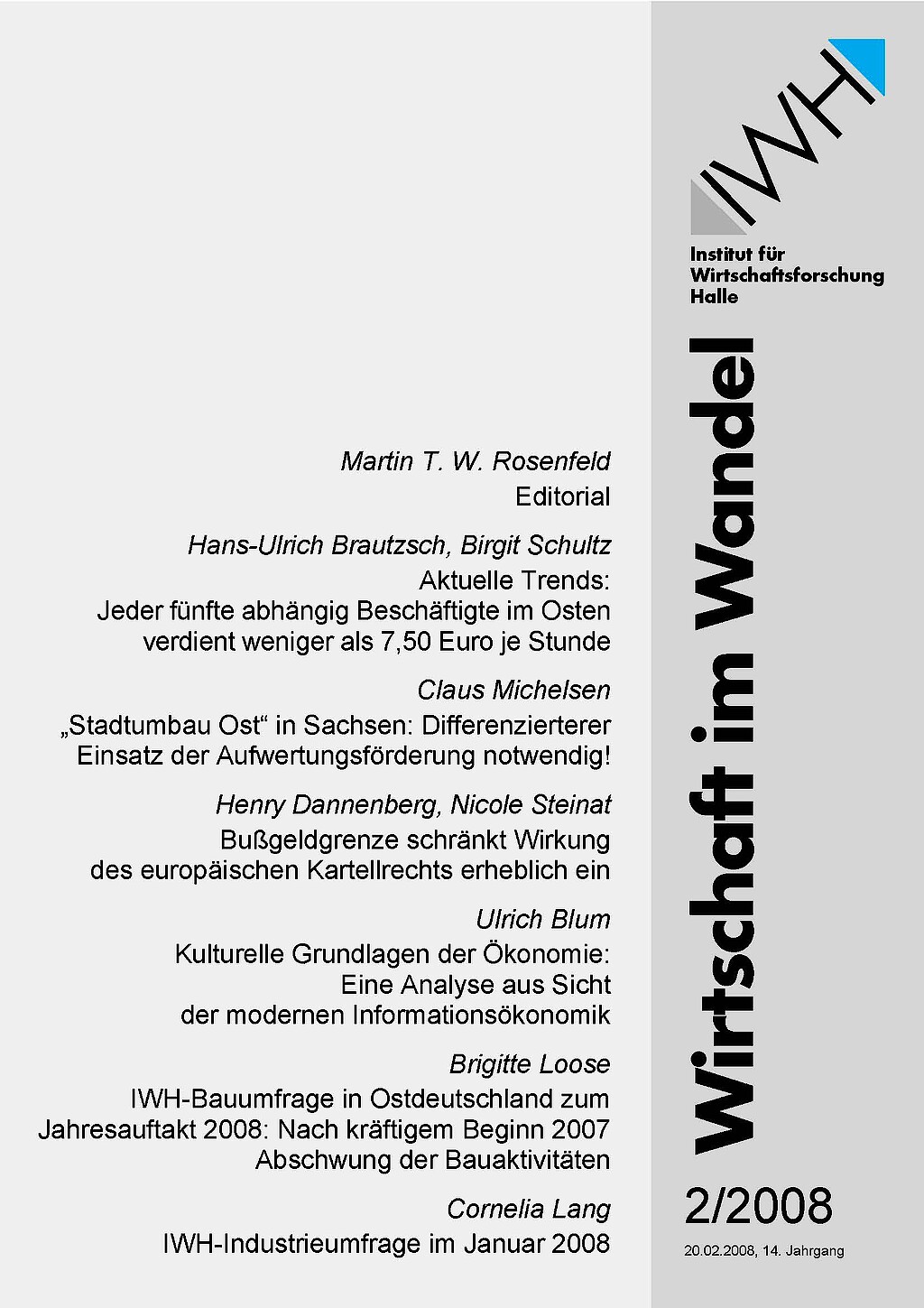
Urban Renewal in Saxony: A Need for a more Problem-orientated Allocation of Subsidies!
Derzeit wird die Bilanz des Bund-Länder-Programms „Stadtumbau Ost“ vor allem in Sachsen intensiv diskutiert. Bereits jetzt hat das zuständige Bundesministerium für Verkehr, Bau und Stadtentwicklung angekündigt, das Programm über das Jahr 2009 hinaus fortzusetzen. Kritiker werfen dem Stadtumbauprogramm allerdings vor, es würde insbesondere durch den Abriß von Altbaubeständen der Fragmentierung städtebaulich wertvoller Siedlungskerne Vorschub leisten. Vielerorts, insbesondere in Altbauquartieren, wird daher der vermehrte Einsatz von Aufwertungsmitteln gefordert. Der vorliegende Beitrag diskutiert in diesem Zusammenhang ob die Aufwertungsförderung die Wohnraumnachfrage stabilisiert. Es zeigt sich, daß das vorhandene Instrumentarium hier nur einen relativ kleinen Beitrag leisten kann. Vor allem die Aufwertung städtischer Randgebiete muß daher kritisch beurteilt werden, soll doch im Ergebnis der Stadtumbaubemühungen die Funktionsfähigkeit der Städte gestärkt werden und nicht der spätere Abriß vorher aufwendig verschönerter Stadtteile stehen. Weiterhin wird eine Typisierung der Städte hinsichtlich der Aufwertungspotentiale vorgeschlagen und die Förderpraxis am Beispiel des Freistaats Sachsen daraufhin näher beleuchtet. Die Ergebnisse sprechen dafür, daß bei der Bewilligung der Rückbauförderung eine Orientierung an der Nachfrage- und Leerstandsentwicklung sowie der Bebauungsstruktur erfolgt, sich inhaltliche Kriterien bei der Bewilligung von Aufwertungsmitteln jedoch nicht nachweisen lassen. Eine Konkretisierung und Schärfung der Fördervoraussetzungen und Vergabekriterien erscheint vor diesem Hintergrund geboten.




